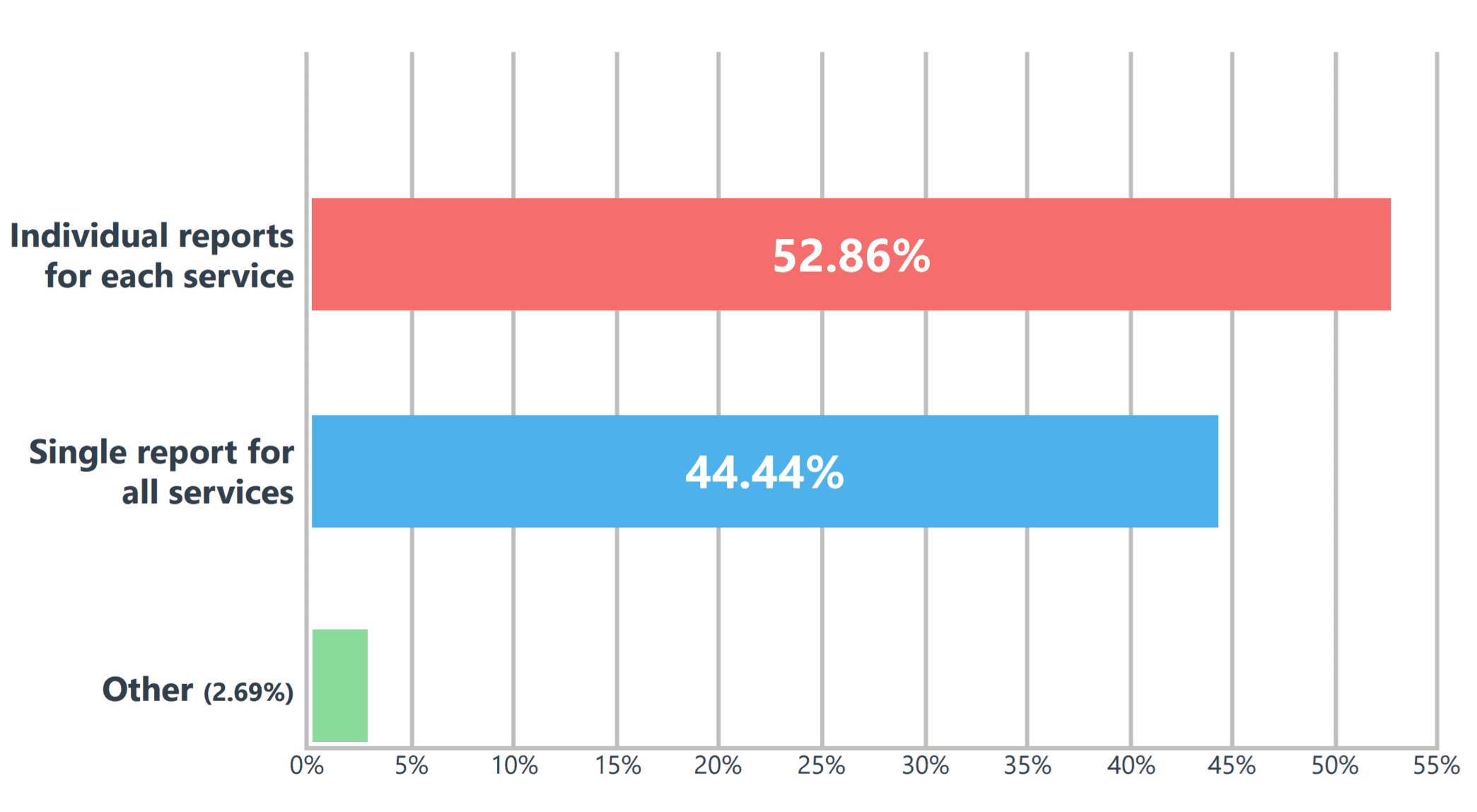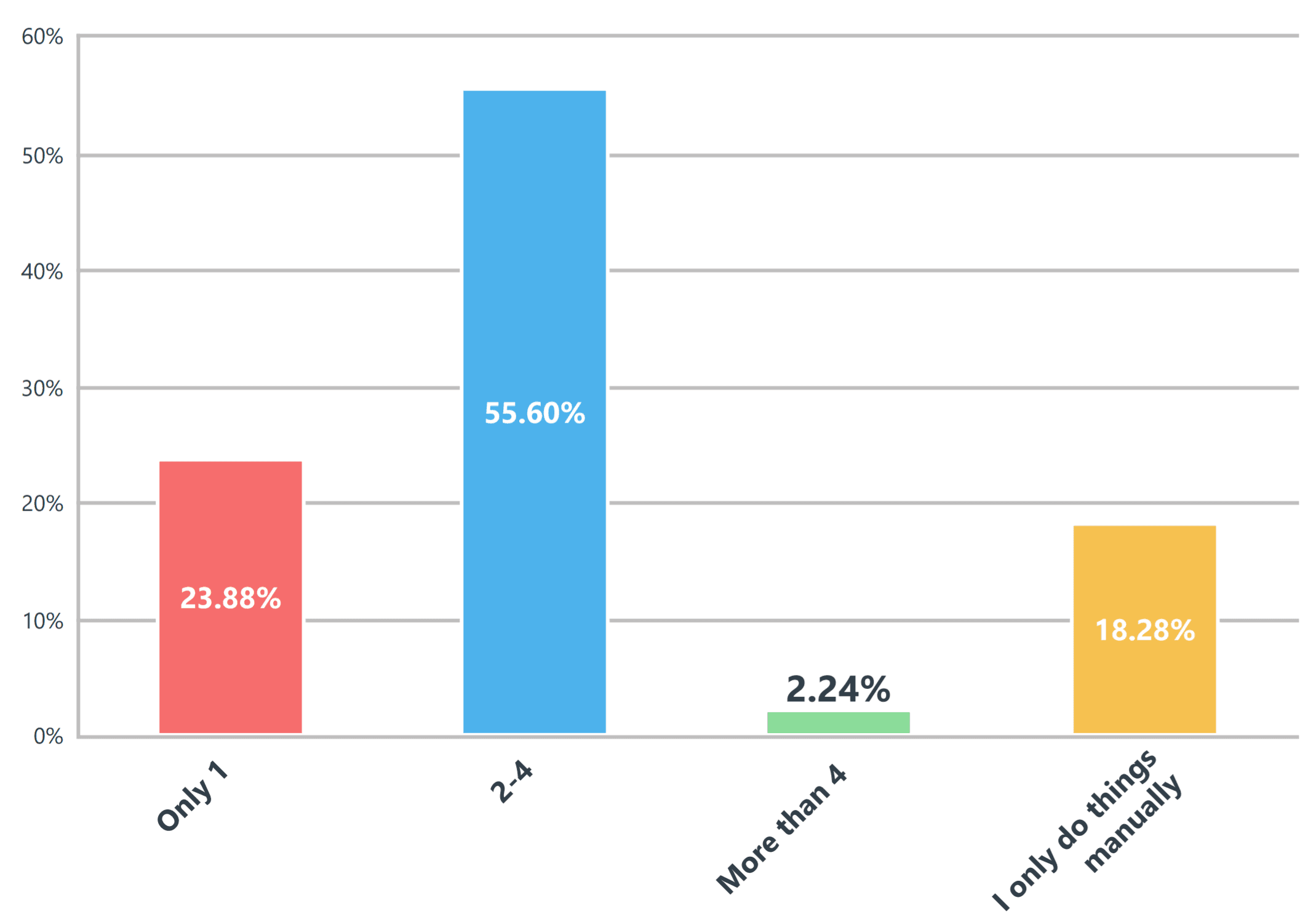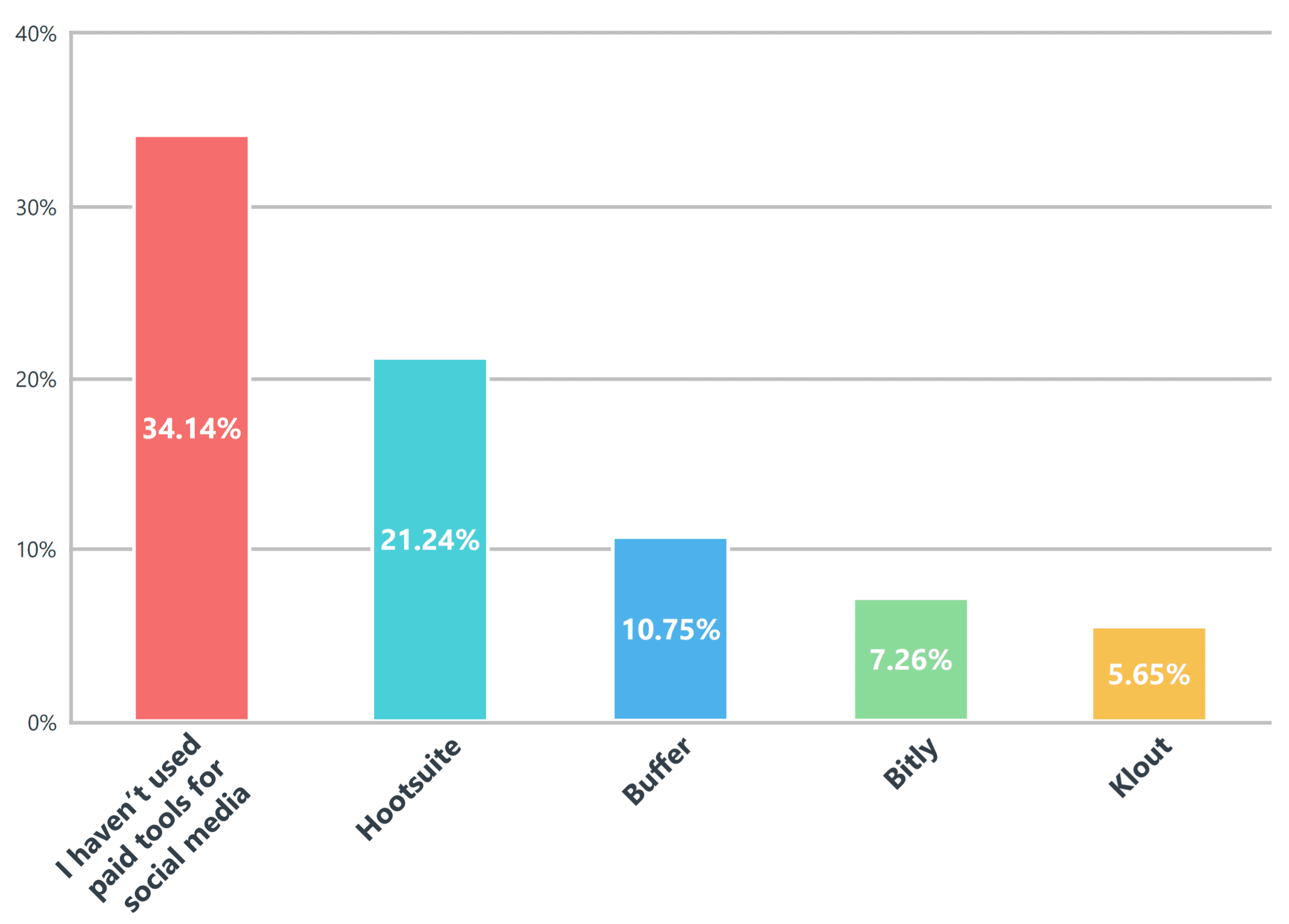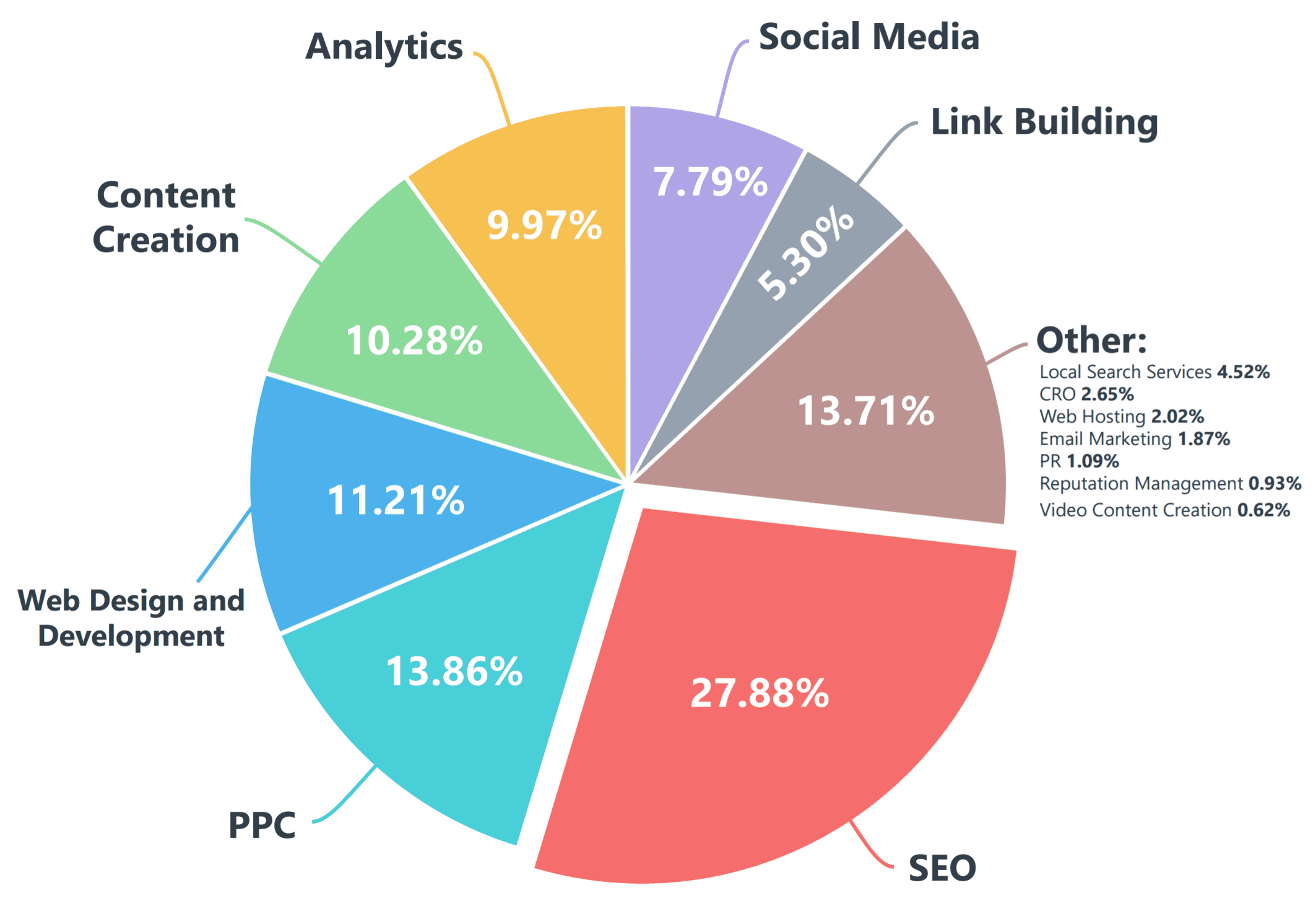
We Surveyed Hundreds of SEOs and This is What We Found
A few months ago, we set out to accomplish a major project, different from anything we handled before at Advanced Web Ranking: to create and share an industry survey focused on SEOs from around the world.
Our survey tried to take the pulse of SEO and perhaps meet new and recurring needs related to business growth in the niche. Thus, the AWR 2017 SEO Stats Report maps out behaviors and trends among freelancers, in-house marketers and agencies. The main driver of the survey was finding out how professionals like you do their work, and for that we tried to formulate the most relevant questions.
Part of our marketing team already had lots of experience from the annual surveys we conduct among AWR users. But in this particular instance we were confronted with finding, approaching, and persuading uninvolved SEOs and marketers to take the time and offer feedback through a relatively lengthy questionnaire.
It wasn’t easy, but the end result matched our expectations. And now we’ve reached the final, most important point of the project: to share our findings with you.
AWR 2017 SEO Stats Report maps out behaviors and trends among freelancers, in-house marketers and agencies. - Tweet this
If you want to jump straight to the complete report, you can download it here; otherwise, I invite you to continue reading, and I’ll do my best to present what I think are some of the most interesting - if not important - findings of the AWR 2017 SEO Stats Report.
What the survey examines
We devised the survey questions so that overall, it focused on a few major aspects of doing and being an SEO. This would hopefully reveal whether there are any notable disparities in the types of approaches taken by marketers who work in different environments and organizations. For this, we asked respondents to identify themselves as freelancers/ consultants, members of an in-house department, or as part of a marketing agency.
The resulting study has been divided into chapters that focus on:
the tactics SEOs use and how they view these tactics,
how they report to clients and whether they automate this process,
the tools they use to work on different tactics,
their approach(es) to client acquisition,
business models adopted by the organizations they’re part of.
All of this data has been neatly exposed in good-looking charts that help you visualize the information extracted, and which will hopefully inspire you to serendipitous insights that will boost your work efficiency and have as great a positive impact on your work as possible.
How do SEOs execute their tactics?
Those who were kind enough to respond to our survey were given a list with the most common SEO techniques used today, and asked which were - in their opinion and experience - the most efficient. They were able to select as many as they liked but by far, most of them chose on-page SEO.
Almost 49% of respondents said they consider on-page SEO as the most efficient tactic they use. This was followed quite closely by content creation, as voted by 33.20% of marketers. Link building came in third, with a mere 15% of votes.
The above-listed percentages reflect a global view of the attitudes of the survey respondents, but inside the ebook you’ll be able to find this data broken down by organization type as well. For instance - and quite unsurprisingly so -, you’ll find that freelancers are more often than not those who differ most from their peers.
67% of marketers say link building is the most difficult SEO tactic. - Tweet this
When we asked what they think is the most difficult tactic, 67% concurred link building was the most troublesome to deal with. There’s a huge difference between this and next runner-up, content creation, which is considered difficult by only 17.62% of marketers.
All other tactics listed, such as keyword research, on-page SEO, or social media, received a fairly low number of votes, indicating that marketers don’t really find challenges in executing them.
The survey also aimed to find out whether there was any correlation between efficiency/ difficulty in performing these tactics, versus whether they’re outsourced or not. The most outsourced tactic, with approximately 45% of votes, is content creation, whereas on-page SEO is dealt with internally by about 90% of marketers.
How do you execute content creation?

As for how often they perform these tactics, on average 43% of respondents said they do keyword research and technical audits whenever required. Furthermore, a great majority of SEOs perform rank tracking (68%) and visitor tracking (64%) on a monthly basis. As for link analysis, marketers seem to be divided on frequencies of execution - about 37% perform it whenever required, but another 31.91% do it monthly.
How do marketers report to their clients?
According to the data gathered in our survey report, website traffic remains the most valuable KPI marketers add to their reporting (about 26% of respondents). But this is followed closely by search rankings (23.7%), leads generated (16.5%), sales revenue (10.7%) and visitor conversion rate (10.2%).
Website traffic is still considered the most valuable KPI by 26% of marketers. - Tweet this
On questions regarding project reporting frequency, we divided respondents by those who work in-house (and thus report to superiors and executives), and freelancers & agency employees, who have to report to clients.
Consequently, approximately 46% of in-house SEOs said they report on a weekly basis, and another 46% opted for monthly reporting, which indicates both reporting options are just as popular for this respondent category.
Most freelancers and agencies do monthly reporting for their clients - 65% of freelancers chose monthly, and a whopping 77% of agency SEOs report on a monthly basis.
How do you showcase progress?

Another interesting find was that 53% of marketers prefer to do individual reporting, meaning they create separate reports for each of the various services they provide to their clients. This probably has a lot to do with the different departments within an agency, because looking at the data by respondent type shows quite significant differences. You can probably intuit what those are, but I’ll let you discover them in the report - suffice to say freelancers have a different approach to this.
And now we get to the really captivating part - do marketers use any tools for report automation? What do you think? What do you use?
According to the AWR 2017 SEO Stats Report, about 45% of marketers automate reporting to their clients. - Tweet this
Well, according to our report, almost 55% of marketers prefer to compile their reports manually. Yep, manually.
As for the other 45%, the tools they use most often to automate reporting are Advanced Web Ranking Cloud (19%), SEMRush (9%), Raven Tools (8%) and Google Analytics (7%). You can - of course - find the extended list of tools inside the ebook.
How much do SEOs rely on automation?
The data gathered in our survey shows that overall, marketers have a quite varied approach to automating the tactics they use for SEO. While some tactics require heavier use of tools, marketers seem to be just as happy to perform some of them manually.
Keyword research, link analysis and on-page SEO are often automated, but content creation is mostly performed manually. Most marketers regularly use 2-4 tools at a time for each of the tactics they employ (55% for keyword research, 53% for link analysis, 47% for on-page SEO). About 37% of respondents use 2-4 tools for social media, while 30% said they perform social media tasks manually.
How many automation tools do you regularly use for executing keyword research?

It follows that content creation is still handled manually by 64% of marketers, a good indicator that they pay heed to Google’s SEO advice and, let’s face it, those scary algorithms.
Most marketers use 2-4 tools to automate SEO tasks, but 64% report dealing with content creation manually. - Tweet this
Tactics & Tools
Let’s take a closer look at how SEOs approach automation for each tactic in particular. However, it’s worth noting that we focused this part of the report on paid tools, so there’s no account of what other free tools marketers might use. When we asked marketers what tools they generally use for keyword research, almost 15% noted they don’t use any paid tool.
This small percentage might indicate that not using a paid tool for keyword research could have more to do with lack of budget and prioritizing what other resources are available towards tasks or objectives that are considered more important for each team/department. Another explanation might be that they use in-house developed tools, or free tools which weren’t included in the present survey.
Otherwise, 26.23% of respondents say they use SEMrush, followed by moz Keyword Explorer (20%) and keywordtool.io Pro (5.74%). This represents the top three of keyword research tools among respondents, but a significant percentage is spread across a wide variety of tools. One can argue that these top three tools see such great usage thanks to their popularity, branding, marketing efforts and longevity on the market, but that lots of SEOs seem to make do just fine with other tools, including free ones with limited capabilities.
Before I give you a quick overview of rank tracking tool usage, it bears mentioning that the survey data may be a little skewed due to the fact that a portion of respondents are Advanced Web Ranking users.
As such, AWR Cloud came first in rank tracking automation with 28.75% usage, followed by SEMrush at 16.30% and moz at 13.74%. This is one part of SEO where marketers seem to depend on automation, since only about 3% reported not having used any tools in the past 12 months.
Only 3% of surveyed marketers haven’t paid for rank tracking tools in the past 12 months. The rest use 1 or multiple tools. - Tweet this
Link building, on the other hand, seems to be another area where lots of marketers (11%) don’t pay for automation tools. Of those who do, 16.33% prefer Majestic, 16% use Screaming Frog SEO Spider, and 15.38% use ahrefs. The list goes on, but the rest of the votes are spread quite evenly among them.
Which paid tools have you used for social media in the last 12 months?

Marketers might be unwilling to pay for social media management tools, since 34% of respondents claim they haven’t used any tools in the past year. You can see the full list of social media tools they use inside the report, but the top three is this: Hootsuite comes first at 21.24%, Buffer is second at 10.75%, and Bitly is used by 7.26% of those surveyed. However, the tops and figures look quite different when they’re broken down by responder type.
34% of marketers don’t use any paid tools for social media management, performing all their tasks manually. - Tweet this
When it comes to on-page SEO, a tactic we’ve seen most marketers consider to be the most important, using tools seems to be another subjective approach. However, the most used paid tools are Screaming Frog SEO Spider (33.70%), Moz On-Page Grader (15.30%) and DeepCrawl (7.76%).
These are just the main paid tool usage percentages that the AWR 2017 SEO Industry Report uncovered. In future editions, it will be perhaps useful if the survey gets to delve deeper into the reasons why marketers prefer these tools and not others, whether they perform some tactics manually on a purely voluntary basis or for other reasons, and try to see what reasons lie behind decision making when it comes to choosing between free tools, paid tools, or no tools.
How do SEOs acquire and retain clients?
This part of the report is probably of interest to all marketers, since it’s directly related to running a successful business. Learning about how your peers find and sign clients may reveal tactics and opportunities you weren’t aware of, or hadn’t considered trying for yourself.
One of the first questions the survey asked is what services clients request most often. Since we targeted this at a mainly SEO professional audience, it’s no wonder search engine optimization came in first with 27.88% of votes.
The real interesting stuff happens when you look at the runners up: the second most requested marketing service is PPC (13.86%), but it’s received a fairly low number of votes. And while it’s true that the present report doesn’t focus on the reasons why clients keep asking for PPC, nor does it uncover whether they’re pleased with the results, the bottom line is that this tactic is still very much used and trusted by everyone.
SEO, PPC and web design & development are the top three most requested online marketing services. - Tweet this
The third most requested service is web design and development (11.21%), which isn’t all that surprising - those who care about their businesses have invested a lot in optimizing their websites and developing mobile alternatives and supporting apps.
Which services are most requested by your customers?

When asked whether they work with one or several industry niches, most respondents (~84%) say their work extends over various markets. The most common ones seem to be the business and industrial sector (12.70%), travel and tourism (7.20%), and retail (7.08%). But when we asked marketers what niches they specialize in, the results look a bit different. Most of those who completed the survey specialize in real estate (20%), travel and tourism (15%), and health, home & garden, retail and vehicles (10% for each).
Bonus points
As a bonus point, we wanted to uncover a bit more on how various types of companies structure their business. Here, the answers vary widely between freelancers, in-house departments, and marketing agencies.
Of the freelancers we surveyed, about 3 in 5 marketers are dedicated to SEO, and each team/company spends over 60% of their resources on this aspect of marketing. In agencies, resources are evenly distributed among the services they provide, whereas 60% of in-house departments allocate around 80% of resources for SEO.
Inside the report, you’ll also find data on how many members there commonly are in a marketing department, and how many of those focus solely on SEO, and how many clients each professional handles on average in a month.
Conclusion
These bits of data, and lots of other interesting notes are up for grabs in our latest ebook, which we hope you’ll find useful.
Finally, we’d love to hear what you think of the topics approached by the survey. Are there any subjects that could have been covered more thoroughly? And if so, what do you think would have added to a more comprehensive picture of the industry? Are there any questions you’d like to see answered in a future report?
And what do you think about our findings - do you feel like they represent you and your work? How valuable is this information for you, what decisions will it help you make?
We look forward to your questions and feedback!
Article by
Lia Boangiu
Lia Boangiu was part of the marketing team at AWR. Her lifelong passions include literature, theater and film, but her newly found enthusiasm for blogging, search engines and SEO, trumps other hobbies at the moment.
stay in the loop




